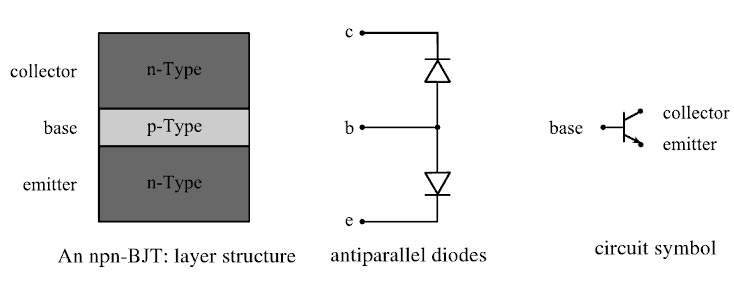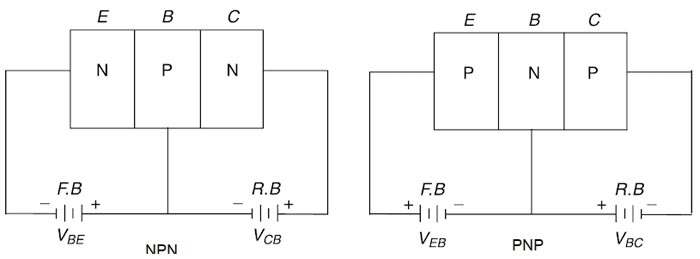In a BJT the base current(IB) is about ______ of emitter current (IE)
Right Answer is:
5%
SOLUTION
The bipolar junction transistor (BJT) is a semiconductor device with two PN-junctions. Two different types of bipolar junction transistors exist, NPN- and PNP-type. This nomenclature describes the structure of the BJT, e.g. n-doped layer, p-doped layer, n-doped layer like for the NPN-type. One of the n-doped layers is heavily doped and called the emitter. The other n-doped layer is called the collector and the p-doped layer in between is the base. For the required functionality the base has to be very thin. Each of the three layers is connected to external terminals.

Operation and Current Components of NPN Transistor

The forward bias applied to the emitter-base junction of an NPN transistor causes a lot of electrons from the emitter region to crossover to the base region. As the base is lightly doped with the P-type impurity, the number of holes in the base region is very small and hence the number of electrons that combine with holes in the P-type base region is also very small. Hence a few electrons (almost 5%) combine with holes to constitute a base current IB. The remaining electrons (more than 95%) crossover into the collector region to constitute a collector current IC. Thus the base and collector current summed up gives the emitter current, i.e IE = – (IC + IB)
In the external circuit of the NPN bipolar junction transistor, the magnitudes of the emitter current It the base current IB and the collector current IC are related by IE = IC + IB
So the conclusion is:
(a) For the normal operation of a BJT, the emitter diode is always forward biased and the collector diode reverses biased.
(b) The collector current is almost equal to the emitter current.
(c) The base current is always very small. Also from the above consideration, it is clear that
IE = IC + IB
Thus we find that in normal B1T operation a relatively large current is transferred from a low-to-high resistance circuit, that is, from forward-biased diode to a reverse-biased diode.
